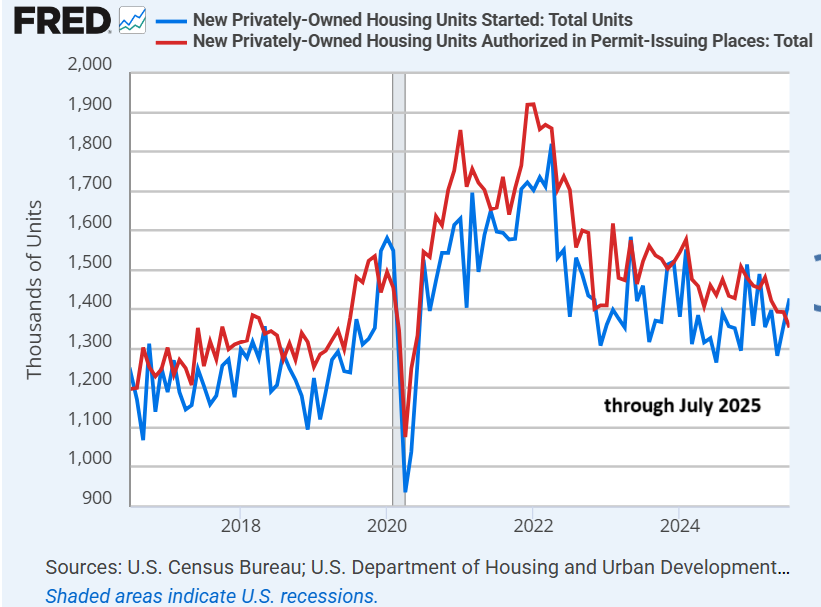Nvidia reports strong guidance as AI boom sparks ’off the charts’ Blackwell sales
It’s been a rough year for the residential property market, but the tide is turning favorable again, or so the recent rally in homebuilder shares suggest. A closer look, however, reminds that uncertainty about several key factors for real estate remain in flux, including the outlook for mortgage rates and the health of the economy.
But markets, as the saying goes, are forward looking, and so the obvious risk factors that are headline fodder today are yesterday’s news. That, at least, is one narrative that’s helping boost homebuilder stocks, which appear to be pricing in better days ahead.
The SPDR® S&P Homebuilders ETF (NYSE:XHB) has been trading at/near its highest level since December in recent days. As of Tuesday’s close (Aug. 19), XHB is also leading the broad stock market year to date for the first time since January, posting a 10.4% rise in 2025 vs. 9.8% for the shares in general via SPDR S&P 500 ETF (NYSE:SPY).

The question is whether the underlying fundamentals for housing, along with macro conditions, will cooperate in the near term to keep the rally going? On that point, there’s still room for debate.
Yesterday’s better-than-expected news on housing starts for July, argue the optimists, support the case for optimism. New construction of residential housing rebounded to a five-month high last month, led by multi-family units.
The ongoing slide in newly issued building permits, however, is worrisome. This leading indicator for starts fell again in July, dropping to the lowest level in five years – a sign that the outlook for housing construction remains challenged.
A key factor is pricing, which has become a headwind for the industry — a factor, say housing analysts, that’s persuading would-be buyers to stay in rentals for longer.
“The data suggests that we’re in for a softer patch,” predicts Macrina Wilkins, a senior research analyst at the Associated General Contractors of America, referencing the slide in permits. “What that really means is builders are cautious about any future demand or the financial conditions that would impact consumers and their inclination to buy.”
Buddy Hughes, chairman of the National Association of Home Builders (NAHB), agrees. “Single-family production continues to operate at reduced levels due to ongoing housing affordability challenges, including persistently high mortgage rates, the skilled labor shortage and excessive regulatory costs,” he notes. Indeed, NAHB’s index of homebuilder sentiment fell in August, returning to the lowest level since 2022.
A key headwind is the relatively elevated level of mortgage rates. The benchmark for the average 30-year fixed mortgage rate has turned modestly lower recently, settling at 6.58% as of Aug. 14. But that’s still well above the pre-pandemic era, and so financing costs remain relatively steep for many would-be home buyers.

Relief may be coming if the Federal Reserve starts to cut interest rates at next month’s policy meeting, as Wall Street expects. But if tariff-related inflation risk still lurking, uncertainty about the path of long-term rates remains unclear, as I discussed yesterday. And if the Fed does decide to cut, that could be because it’s persauded that slowing economic growth is a bigger risk than inflation — not exactly the ideal foundation for a new housing-construction boom.
Meantime, the case for a bullish outlook in homebuilder stocks will be tested in the weeks ahead. Investors will be watching to see if XHB can rise above its previous high, set in December. Without stronger support from the fundamentals, including further declines in mortgage rates and a relatively stable economy, it’s still tough to dismiss the possibility that rally in homebuilder shares is little more than a bounce off of recent lows rather than the start of an extended bull run.
